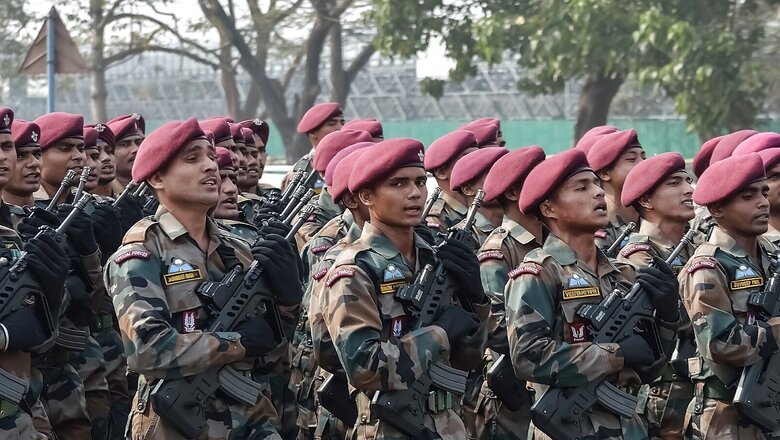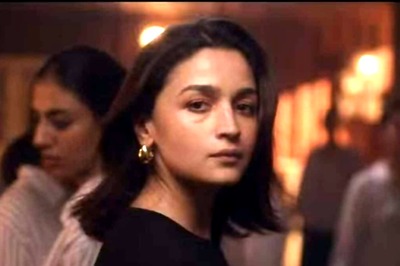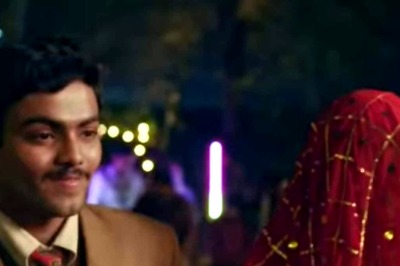Agnipath is a Subset of Transformation in Armed Forces, May Need Flexible Approach in Implementation

views
The way to view the new Agnipath scheme for recruitment into the Armed Forces of India is to look at it as a step towards innovative human resource management as part of the overall transformation, which is underway in the national security domain of India as related to the military. That it has met with such resistance as evident in the streets may have surprised the military itself. A dispassionate analysis will explain why the youth of India is angry and how this can be cooled down. At the outset, it should be clear that we are analysing issues related not to the officer cadre of the armed forces but to the below officer cadre, which makes up a strength of almost 1.3 million.
The military profession is considered one of the most attractive in India and the armed forces draw tremendous affection, adulation and adoration from the public. For the hardy, young rural stock and those from the smaller urban centres all over the country, a career in the armed forces is a dream. Much time, energy and even money is invested in attempting to secure an entry through a rigorous recruitment system. These men, and now women, give to the nation their dedication and loyalty and never hesitate to put their lives in the line of duty. The nation has also not been tardy in its side of the contract, giving a career opportunity, which could take many of these young people to serve up to 30 years of service in a clean and highly motivated environment.
Most importantly, it promises and delivers to them a pension for life and a family pension to their spouses in the event of their death; such social security is unimaginable in many advanced countries. Without labouring on these virtues, a last and most significant point is the fact that at least 65,000 of these men exit the armed forces each year as disciplined and satisfied members of society; a kind of comfort zone for the nation. When the government was amending pension rules for other services by bringing them under the purview of the National Pension System (notified 1 Jan 2004), the armed forces were exempted and their pensions continued as before; that is in deference to the respect they are held with.
Thus, on June 14, 2022 when the Agnipath scheme was announced, and it’s not a bad scheme as such, the prevailing perception was that it promises to destroy much of the carefully developed unique military ethos and respect that the armed forces have developed over decades. Five issues stand out and need to be stated. First, this will have an initial Tour of Duty of only four years for new entrants. Second, only 25% of these will be absorbed into the regular cadre at the end of four years by re-enrolment thus losing seniority for all purposes and being qualified for lesser pension. Third, an exit package of Rs 11.75 lakh would be given to those not selected, to compensate for the lack of pension and to start a second career; no medical facilities and no ex-serviceman (ESM) status would be accorded to them. Fourth, there would be alternative jobs for the exiting personnel with some reservations.
Subsequent to the announcement and the turbulence in the streets, there have been assurances of reservations in state government jobs and Central Armed Police Forces (CAPFs). Fifth, there will be six months of basic training for all Agniveers as against the current nine months. There is no mention of the technical training which has to be imparted to soldiers of the technical arms and similar in the Air Force and the Navy.
With the basic facts clear, one can proceed to explain where the concerns of the public rest and why there has been such an adverse reaction to Agnipath. The first point is that not too many people have understood the scheme, in keeping with the inability to understand most things military. Human resource management of the armed forces is not too easy to comprehend. What the government is attempting to do is to reduce the highly inflated pension outflow because of the existence of a long-serving permanent cadre, with One Rank One Pension (OROP) also adding to the figures. This outflow eats into the overall defence budget leaving much less for the modernisation effort through investment in better and more advanced equipment.
The need for remodelling the cadre and its intake and exit is therefore justified. However, in doing this, what must be achieved should also be the best ‘bang from the buck’ (full benefit from the investment); almost every citizen, experienced or otherwise, is doubtful about this being achieved. The Agniveers’ four years (48 months) total presence in uniform would be subsumed in six months basic training, at least six months’ specialist training (for some) and four months of annual leave (one month per year as against the two for regular soldiers). That leaves 32 months for effective deployment. The technical hands would just about be maturing at their jobs and their expertise would be wasted with many leaving and an equivalent number being trained afresh. An optimum period for colour service could be seven years or a consensus figure arrived at by further consultation which is a must. An appropriate financial compensation model could follow without pension or ESM facilities. Although this would be a step to optimise the organisational requirement, it would also contribute to the satisfaction of the candidates who are mostly clutching at straws for survival.
A review which could further assuage the youth is an assurance of absorption for a second engagement in a government job where perhaps they could join the NPS too and where age limits would not be such a criterion. Unfortunately, the past experience of the armed forces with assurances of jobs for ESM and even for lateral absorption of Short Service Commissioned officers hasn’t been too good. With no legal locus standi for these and low credibility factor, the youth in the streets are not convinced. One way of enhancing the credibility factor is by bringing some form of legislation. A Parliamentary Bill earmarking such slots will become law and thus much more implementable.
The policy need not be dogmatic about the percentage of selection for the permanent cadre. Expenditure models need to be evolved relating to 40% or 50% retention and the pension expenditure in a case where seven years is the initial colour service. It’s a question of drawing a compromise between the interests of the candidates and the establishment. The government has been extremely flexible although it is also under criticism for not having fielded a pilot project, which would have thrown up many of the glitches well before for smoothing the way. It’s not too late and the entire project can be treated as a pilot for eventual adoption in reviewed and re-modelled form after two years.
The one thing, which may meet more ready acceptance of the veteran community, a significant stakeholder in this entire process of reform, is the issue of regimentation. The intake pattern into various functional Arms and Services of the Army and its very highly motivated regiments must not be tampered with. There is a reason for this. There is too much happening in terms of reform and review. A new recruitment system, combined with modernisation of equipment which requires much focus, restructured pattern of training due to reduced period, the steps towards creating integrated theatre commands, redeployment to meet the new threats at the northern borders and renewed low intensity threats in J&K, have placed enough on the plate and are causing a churn which produces unpredictability.
In the midst of this, it may not be a very good idea to meddle with the social fabric of the Army; the existing pattern of regimentation must be allowed to continue with review after five years. A separate analysis of this will follow a little later.
Lastly, there must be nothing in units and regiments, which must distinguish the Agniveers from the rest of the rank and file. Whether engaged for four years or seven, Indian Army soldiers fight as one, and that ethos must never change.
The writer is a former GOC of the Srinagar-based 15 Corps and Chancellor, Central University of Kashmir. The views expressed in this article are those of the author and do not represent the stand of this publication.
Read all the Latest News , Breaking News , watch Top Videos and Live TV here.




















Comments
0 comment